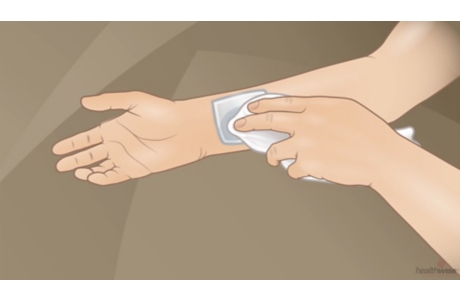Skin Adhesives (Liquid Stitches)
Topic Overview
Skin adhesives are clear gels that may be used to hold the edges of a small cut together. Your doctor may apply a skin adhesive instead of stitching your cut. A liquid will be applied to your skin and allowed to dry. As it dries, it creates a film that will hold together the edges of your cut.
If a skin adhesive is used, be sure to follow your doctor’s instructions on how to care for your cut. In general, to care for your cut:
- Leave the skin adhesive on your skin until it falls off—usually 5 to 10 days after it was applied.
- Do not scratch or pick at the adhesive. This may cause the adhesive to fall off too soon.
- Follow your doctor’s instruction on keeping the wound and skin adhesive dry. You can shower with a skin adhesive in place. Be sure to gently dry the area after you shower. Avoid soaking your wound in water, such as tub bathing, washing dishes, or swimming.
- If your doctor has applied a bandage over the wound, keep it clean and dry. Follow your doctor’s instruction on changing the bandage.
- Do not put ointments, including antibiotic ointment, over the adhesive. This can cause the adhesive to soften or come off too soon.
- Watch for signs of infection. If signs of an infection develop, call your doctor.
Credits
Current as ofJune 26, 2019
Author: Healthwise Staff
Medical Review: William H. Blahd, Jr., MD, FACEP – Emergency Medicine
Adam Husney, MD – Family Medicine
Kathleen Romito, MD – Family Medicine
H. Michael O’Connor, MD, MMEd, FRCPC – Emergency Medicine
Martin J. Gabica, MD – Family Medicine
Current as of: June 26, 2019
Author: Healthwise Staff
Medical Review:William H. Blahd, Jr., MD, FACEP – Emergency Medicine & Adam Husney, MD – Family Medicine & Kathleen Romito, MD – Family Medicine & H. Michael O’Connor, MD, MMEd, FRCPC – Emergency Medicine & Martin J. Gabica, MD – Family Medicine


